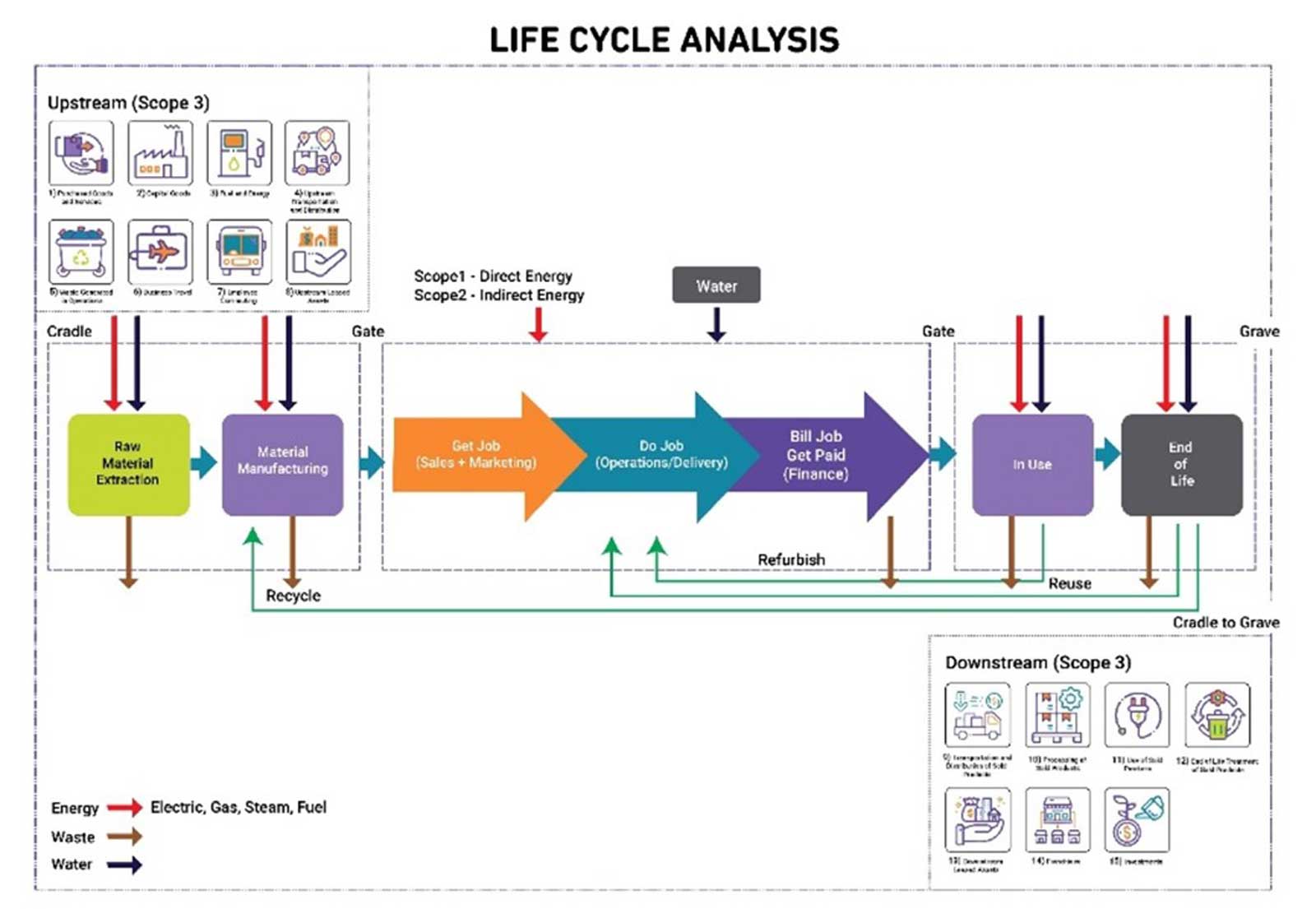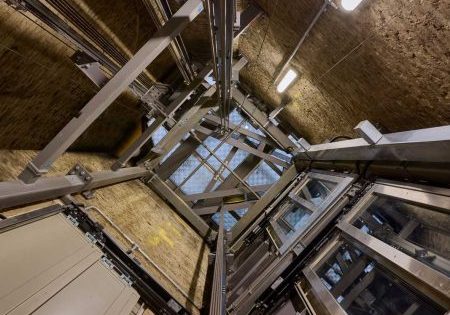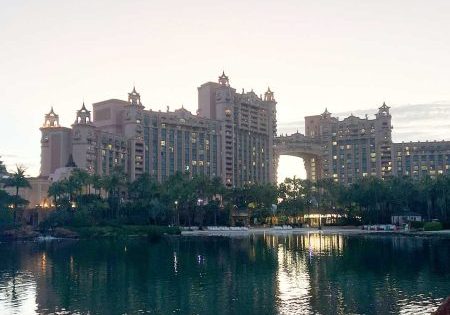Which will you be?
As we know, the world is heating up.
As is the pressure on companies and contractors in particular to answer some pretty knotty questions about their carbon and Scope 1, 2 and 3 emissions. If you’re getting this pressure, this article might help.
Why Is This Important?
We all know we could all do more, and we (Statius) now know lift companies that have lost (large and lucrative) contracts because they have not shouted sufficiently loudly about what they have already done and the advances they have made!
So, we’re going to take a rocket ride through the history of Conference of Parties (COPs), summits, legislation, regulation and standards in our quest to get to net zero. At the end of which, you’ll know if you’re going to want to be net zero or net hero.
As we are all aware, in order to stand any chance of avoiding catastrophic climate change, governments and businesses have committed themselves to the challenge of net zero completely negating the effects of greenhouse gasses (GHG) produced by humans by 2050.
But What’s the Starting Point?
We could go back to 1972 when James Lovelock, the brilliant and polymathic scientist, first postulated his Gaia hypothesis — the idea that all living organisms on the planet interact with their surrounding environment to form a self-regulating system that created, and now maintains, the conditions that make life on Earth possible.
The first COP was held much later in Berlin in 1995. Since this first COP, the UN Framework Convention on Climate Change (UNFCCC) has gathered the international community together (almost) every year to assess and advance progress on tackling global warming, and in the early days, these, and other, ideas started to coalesce as part of three key climate change summits: Kyoto (1997), Copenhagen (2009) and Paris (2015). These summits marked significant milestones in the international response to climate change, each with distinct outcomes and implications for what are now the UN’s 17 Sustainable Development Goals (SDGs), which we are increasingly seeing referenced in tenders presented to lift companies and, at a lower level, a host of legislation, regulation and standards.
As a result of these initiatives and mounting pressure, impressively, in June 2019 the U.K. became the first major economy to commit to and set a legally binding target for net zero carbon emissions by 2050, and since then, numerous major companies and cities have set even more ambitious targets.
However, less impressively, the pendulum of our government, businesses and others, swings backwards and forwards from time to time, and it’s “time” that is actually running out.
As a result of the plodding international activity to save the planet, various standards have also been produced along the way, so, for some time, Statius has been involved with various environmental-, energy- and climate change-related initiatives. Going back in time again:
- In 1992, the British Standards Institution (BSI) published the first environmental standard, BS 7750, and this provided Statius’ first foray into environmental management, where we partnered with the company that became the primary provider of printed materials for Anita Roddick’s ahead-of-the-curve, sustainably-focused Body Shop. BS 7750 then morphed into ISO 14001.
- ISO 14001, published just four short years later in 1996, was the first international environmental standard — Statius were selected by the Natural Environment Research Council (NERC), the lead body for environmental research in the U.K. NERC became the champion for the then seven U.K. research councils to get 14001. They remain a client to this day.
- ISO 50001, the energy management standard, was first published in 2011.
- The Energy Savings and Opportunity Scheme (ESOS) Regulations were made mandatory for specific companies in 2014.
- The Streamlined Energy and Carbon Reduction (SECR) Regulations were made mandatory for others in 2019.
More Recently
More recently, newer standards and specifications have been released, all applicable to lift companies in one way or another:
- The Science Based Targets Initiative (SBTi) released their Corporate Net-Zero Standard in October 2021. The standard was created to help companies set targets that align with global carbon budgets by 2050.
- PAS 2060 (again a BSI first), originally published in 2010, is a standard outlining the requirements for companies to achieve and demonstrate carbon neutrality.
- ISO 14064:2018 provides guidelines for companies to quantify, monitor and report their GHG emissions and removals. The standard supports participation in various programs, including emissions trading schemes and public reporting.
- ISO 14068, published just last year, builds on PAS 2060, and is the international standard that provides principles, requirements and guidance for achieving and demonstrating carbon neutrality. It provides a framework for quantifying and reducing GHG emissions and the transition to low emission activities. 14068 will formally replace 2060 this year.
These standards provide the frameworks for companies to operate within, but it’s probably the technology that will drive the change. But before we look at the technology, let’s look at how far we have already got.
How Far Have We Got?
Whilst it has recently been reported we may have breached the 1.5° threshold for the first time, more positively, we “may” (“may” being the critical word) be past the emissions peak. It is thought that peak CO2 output might have been in 2019 with an output of 36.9 billion metric t. However, it is believed to be agreed that CO2 output is now slowing. The drivers for which include:
- Global Commitment: As of 2023, more than 1,800 of the largest companies in the world have set net-zero targets, covering more than 30% of global market capitalisation. This is a significant jump from only a handful of companies just a decade ago.
- Renewable Energy Expansion: Renewable energy sources accounted for approximately 29% of global electricity generation in 2022. In the U.K., at the turn of the century, renewables accounted for just 2.8% of all electricity generated. Today, the renewable contribution is closer to 40%, and the cost of solar installation has dropped by a staggering 89% over the same period.
- Electric Vehicle Adoption: Global electric vehicle (EV) sales reached approximately 10 million units in 2022, a 55% increase from the previous year and in spite of recent press about EV sales slowing, they are projected to make up 30% of global car sales by 2030.
- Carbon Capture: More than $1 billion was committed to new carbon capture and storage (CCS) projects in 2022. As of 2023, the total capacity of operational CCS facilities reached around 40 million metric t of CO2 captured annually.
So, that’s the world view. But, where is the U.K.?
In a summary released by the U.K.’s Climate Change Committee in July 2024, they reported:
“The UK has achieved its Third Carbon Budget, covering the period 2018 to 2022. The U.K. has now achieved all three of its carbon budgets to date, demonstrating strength in the U.K.’s legal framework. The U.K.’s emissions … are now less than half the levels in 1990.”
Astonishingly … We are already halfway there! … I bet you didn’t see that in the news!
What’s Next: No. 1 – Technology
Putting the tech’ into context, as far back as 2006, Al Gore (former U.S. vice president and presidential hopeful) suggested in his seminal tome “An Inconvenient Truth” that even then, the technology needed to completely halt climate change already existed. That was nearly 20 years ago! Since then, significant additional technology shifts have been made and brought to bear. You just need to check out the World Economic Forum, SBTi or GHG Protocol websites (or their LinkedIn feeds) to know that significant and positive shifts are occurring almost daily.
Let’s now take a peek at a few of the most interesting technological changes that might help us reach, and incredibly, even surpass, the net zero goal. Most will obviously fall outside the direct control of most lift company owner managers, but, equally, much of these technological changes will conceivably be, indirectly, adopted by them.
Green hydrogen production: There are a variety of difficult to decarbonise industries, like steel and cement, and they are going to need renewably produced hydrogen (green hydrogen), which has the potential to decarbonise these difficult to abate sectors. Electrolysis advancements can enhance efficiency and reduce costs, making green hydrogen a viable energy source for various applications.
Steelmaking alone produces 9% of all carbon emissions, and a Finnish startup, Coolbrook, is now trialling new tech’ which they believe will eliminate significant CO2 emissions from the following sectors: 1 billion t from cement, 600 million t from steel, 500 million t from chemical and petro’ and 300 million t from other sectors.
Circular economy initiatives: Advancements in recycling technology and materials science can reduce waste and encourage the reuse of resources. Creating closed-loop systems, where products are designed to be repurposed and recycled, will minimise environmental impact. Many of you will know that one of my favourite haunts is Goodwood, and at the 2021 Festival of Speed, BMW presented the iVision Circular, the first-ever EV designed, developed and manufactured for the circular economy.
Advanced renewable energy solutions: Solar costs have plummeted, and wind turbines get bigger and more efficient by the day. The continued development of solar, wind and geothermal energy technologies will further enhance efficiency and further lower costs. Innovations like perovskite solar cells promise even higher energy conversion rates, while floating wind turbines open new spaces for offshore wind energy.
One company, Xlinks, plans to bring 8% of the U.K.’s entire energy needs from just one renewable wind and solar project … the size of London … via a 2,500-mi. cable from Morocco. All the tech’ is already proven, and some big names have already pledged funding.
EVs: The widespread adoption of EVs is critical for cutting emissions from the transportation sector. Innovations in battery technology, coupled with an expanding charging network, will facilitate this transition and reduce reliance on fossil fuels. In another article, this time in the FT, various Asian firms are threatening 5-to-10-min EV recharging times. In discussions with one of our clients, literally the week this article was written, they have bought three Hybrid Range Rovers, each weighing 2.8 t, and according to the app, they are delivering anywhere between 175 and 250 mi. to the gallon. One of the drivers is about to hand back his fuel card.
In another Financial Times article a few months back, Maersk, the shipping company, announced that they have ordered 25 ships with specially converted engines to run on methane. As of January 2023, there were approximately 105,000 ships on the ocean, and when I was at sea, reasonably large ships (but not mega huge ships) were burning 50-60 t of crude oil … a day!
There are a whole lot more technologies emerging, so if you want to explore further, go to our net zero blog on Statuius.co.uk.
Bottom line is, as Al Gore said all those years ago, “The tech’ is there.” And even more is coming shortly.
What’s Next: No. 2 — Legislation, Regulations and Standards
As we’ve seen, legislation, regulations and standards have been driven down through the supply chain over time via the likes of the UN’s SDGs to the national level with legislation like ESOS and SECR, which both concentrate on, and require the company to report on, what are called Scope 1 & Scope 2 emissions:
- Scope 1: carbon emissions resulting directly from your operations; predominantly, the running of your vehicle fleet; company cars and vans, any transportation fleet.
- Scope 2: carbon emissions resulting from the gas and electricity (produced by others) that you need to provide heat and power to the facilities you operate.
However, the far bigger impact for most companies, including your own, results from the emissions that arise from your external, and out of your direct control, “upstream” and “downstream” operations. These are your Scope 3 emissions, and there are 15 categories which define the types of activities that might generate these emissions.
Upstream emissions include those arising from:
- Purchased goods and services
- Capital goods
- Fuel and energy (not in Scope 1 & 2)
- Upstream transportation and distribution
- Waste generated in operations
- Business travel
- Employee commuting
- Upstream leased assets
Downstream emissions include those arising from: - Transportation and distribution of sold products
- Processing of sold products
- Use of sold products
- End of life treatment of sold products
- Downstream leased assets
- Franchises
- Investments
My guess is, unless you are steeped in the subject of net zero, most people wouldn’t have an inkling that, in the U.K., we’re actually already halfway there!
A schematic of the three scopes and the component parts can be seen in Figure 1, essentially, mapped to our “get job, do job, bill job, get paid” ISO process model.
In the initial instance, all of this might look quite scary, but calculating Scope 1 and 2 is relatively easy, and if the information is available, will probably only take a couple of hours. Scope 3 is much more significant and knottier, but it is helped by the fact that various government departments have developed a number of (pretty daunting, but just about fathomable) spreadsheets to help. So, again, given you have the relevant information, with a bit of thought and application, you can relatively easily get to a complete, robust and verifiable calculation that will satisfy any tender requirement, and if you are feeling brave, external third-party assessors.
So, Are You a Net Zero Hero?
If you want to be able to look your kids and grandkids in the eye and say I did my bit, you might want to consider how you could be a net zero hero. Then, we need to get cracking on understanding your current company impacts. And then, once you know your impact, you can think about what needs to be done to reduce it.
Conclusion
My guess is, unless you are steeped in the subject of net zero, most people wouldn’t have an inkling that, in the U.K., we’re actually already halfway there!
Admittedly, we’ve probably done the easy bit, and we now need the tech’ to do the rest. But as another example, China, just a few short years ago, was being castigated for adding coal power stations to its infrastructure; last year, China added more renewable power to their grid than the whole of the rest of the world put together.
Paul Polman, for 10 years the top man at Unilever, one of the world’s most respected FMCG brands, pretty embedded in corporate life and unlikely to be described as an ardent tree hugger, predicts, in his book of the same name, a world where companies are not net zero but, as noted above, incredibly, “Net Positive.”
As big bad Bob (Dylan) put it: “The times they are a changin’.”
The optimist in me thinks we’ll get there. Fingers crossed!
Get more of Elevator World. Sign up for our free e-newsletter.










